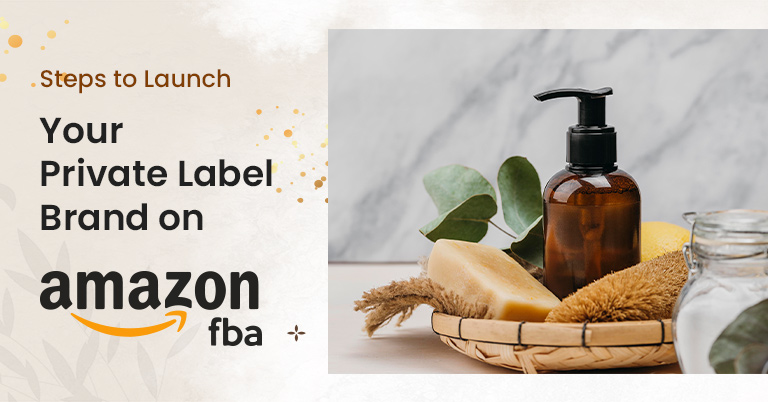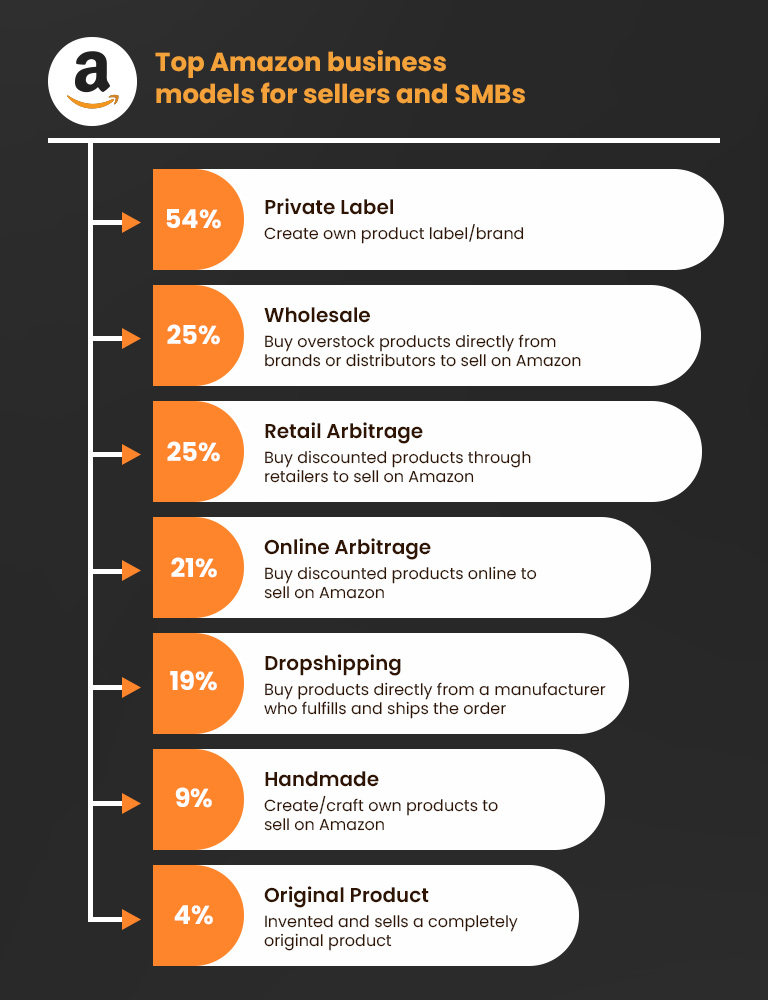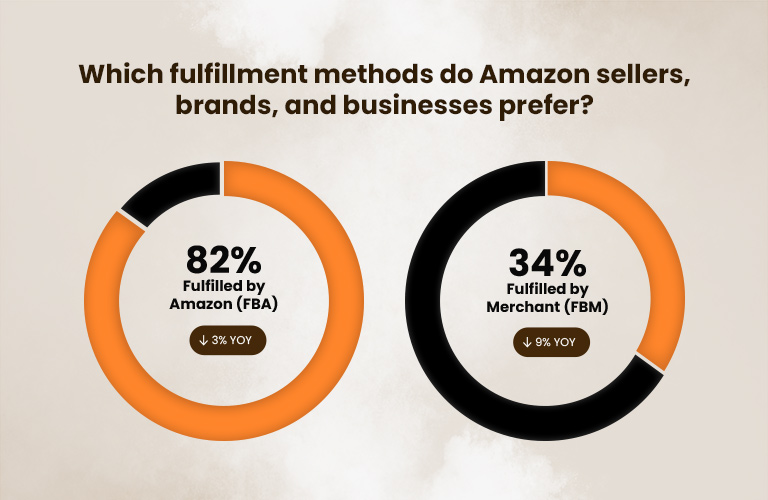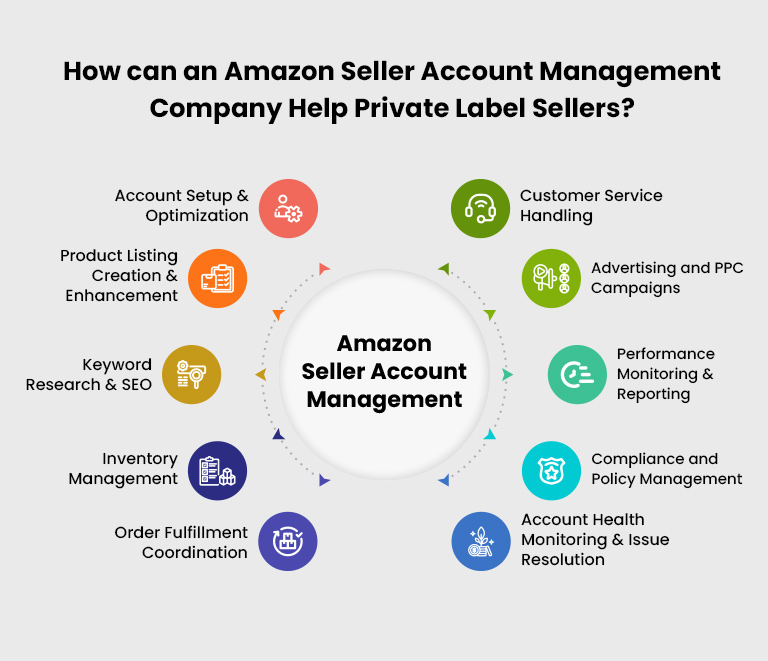
Starting a private label business on Amazon is an excellent way for beginner and experienced sellers to grow in the world’s largest marketplace. Private label remains the top selling model chosen by over 54% businesses on Amazon as per the 2024 State of the Amazon Seller report by JungleScout. It is also a great way to expand your business’s digital footprint. Additionally, signing up for Fulfillment by Amazon (FBA) – something 82% Amazon sellers are using in 2024 as per the same JungleScout report – further streamlines operations so you can focus on growing your brand.
However, setting up an Amazon FBA private label business requires careful planning and execution. This blog outlines everything you need to know about setting up an Amazon store for private-label products with FBA.

Table of Content
What is a Private Label?
Setting up an Amazon store for private-label products involves you, as a seller, creating your own brand and selling products under that brand name on Amazon. You have full control over the design, manufacturing, and marketing of these products. Unlike reselling other companies’ products, selling private label on Amazon can offer better profit margins and greater control over your business.
Is FBA a Good Choice for a Private Label Business?

On the logistics side, Amazon FBA (Fulfillment by Amazon) can be used to handle product storage, shipping, and customer service. While you can still successfully operate a private label store using other fulfillment methods, like handling all aspects of fulfillment at your end (Fulfillment by Merchant) or hiring a third party logistics provider, FBA makes things easier. To start, you first have to send your products to Amazon’s warehouses, and Amazon takes care of storing them, shipping orders, and even managing customer returns.
Selling private label products on Amazon with FBA can work exceptionally well together when:
- You have a high-volume, fast-selling product and need efficient fulfillment capabilities and Prime eligibility.
- Your product is heavy or bulky, and therefore, it is better for you to get an organized shipping infrastructure that can reduce damage in transit.
- You want to quickly scale your operations but do not want to focus on fulfillment and customer service, rather on marketing and product development.
- You want to improve customer experience through fast shipping and increase customer loyalty.
This combination of private-label products and FBA services allows you to focus on growing your brand while Amazon handles the back-end logistics for your business.
How to Set Up your Amazon Store for Private Label Products
1. Conduct Thorough Product and Market Research
The first step in building a successful Amazon FBA private label business is identifying the right product. This means you should do market research to find the products with high demand and low competition. You can use tools like Jungle Scout and Helium 10 to analyze product trends, evaluate search volume, and identify gaps in the market.
Here are the key factors to consider while doing market research for your product:
- Market Demand and Competition: You must look for products that meet a clear consumer need but aren’t oversaturated with competitors.
- Profit Margin: Make sure that your chosen product has enough profit margin to cover manufacturing costs, Amazon FBA fees, and the product’s advertising expenses.
- Product Size and Weight: FBA fees are influenced by product dimensions so it’s better to choose smaller, lightweight items that reduce costs and increase your profitability.
Once you’ve identified a potential product, evaluate its performance by checking customer reviews, competitors’ pricing, and product ranking on Amazon. Try to find a product that can be differentiated from the competition by adding some improved features, design, etc.
2. Source a Reliable Manufacturer
A well-established supply chain is crucial for maintaining product quality and ensuring consistent inventory levels, particularly as your business expands. After choosing the right product, you have several options when it comes to manufacturing. You can either work with a third-party manufacturer, such as those found on platforms like Alibaba or AliExpress or manufacture the product yourself if you have the necessary resources. Most Amazon FBA private label sellers opt for third-party manufacturers for convenience and scalability.
If you choose to go with third-party manufacturers, here are some important steps to keep in mind while choosing one to source products from:
- Compare Multiple Suppliers: Avoid doing business with the first quote you receive. Instead, gather quotes from several manufacturers to ensure you’re getting competitive pricing. Also, make sure you don’t compromise the product’s quality for a lower price.
- Negotiate Terms: Be specific about your desired product quality standards, production timelines, and payment terms. Be flexible and willing to compromise on certain points to reach a mutually beneficial agreement. If you have multiple suppliers, use that to your advantage to negotiate better deals.
- Build Relationships: Building a strong relationship with your manufacturer can help you with better pricing, faster production times, and smoother transactions. You should also explore the possibility of long-term agreements that may offer additional benefits, such as exclusive rights or volume discounts.
3. Create a Brand Strategy for the Amazon Marketplace
Creating a unique brand identity is essential to differentiate your product from similar products listed on Amazon. Effective branding increases customer trust and boosts your product’s visibility on Amazon, which helps you achieve a higher conversion rate.
Follow these steps to build your private-label brand on Amazon:
- Create a Professional Logo and Packaging: You should invest in professional logo design and packaging to ensure your brand looks trustworthy. Focus on clean, eye-catching designs that align with your brand’s identity. When it comes to packaging, use high-quality materials, bold visuals, and clear branding to capture buyers’ attention and create a memorable unboxing experience that leaves a lasting impression.
- Define Your Brand Message: You must work on your brand’s voice by defining its core values, tone, and messaging style. Start by identifying what sets your product apart and what emotions you want to evoke. Consistently apply this voice across all communications to connect emotionally with your target customers.
- Build Trust: To build trust, ensure your branding consistently reflects the quality of your product. Share customer reviews, use professional packaging, and highlight any awards or certifications. Engage with your customers through clear communication and responsive customer service to strengthen credibility.
4. Set Up your Amazon Store
Sign up for a Professional Seller account on Amazon, as FBA is generally available to Professional Seller accounts. You will need to provide business information and set up payment and shipping methods. Once your account is verified, you can start listing your products for sale and can set up prices. Also, you can now go to your Seller Central account and enable the FBA option.
Here are some other key steps to keep in mind when setting up your Amazon store as a private label business:
- Optimize Your Product Listings: Ensure your product listings include high-resolution images, detailed descriptions, and relevant keywords. Well-optimized listings help to improve your product’s visibility on Amazon’s search results.
- Use Effective Keywords: When setting up your Amazon store, focus on including relevant keywords that match your specific product category. Research industry-specific keywords your target customers are searching for and incorporate them into the title, bullet points, and product descriptions. Be mindful of Amazon’s guidelines to avoid penalties or delays.
It is worth noting, however, that Amazon store optimization is an ongoing process, especially as your product catalog expands. Once your store is launched and sales begin, the workload can quickly become overwhelming. Neglecting your listings for extended periods can diminish the visibility you initially worked hard to establish. To mitigate this risk while efficiently managing your time and resources, you can consider leveraging the expertise of an Amazon seller account management company.

5. Launch and Market Your Private Label Business
Once your store is live, the next step is to drive traffic to your product listings and convert visitors into customers. A successful product launch is the key to building momentum and driving sales in your Amazon store.
Here are some strategies for launching and marketing your store:
- Build Anticipation in the Target Market: Create a buzz around your product launch by using social media, email marketing, and influencer partnerships. Collect reviews from early adopters or beta testers to build credibility.
- Use Social Media for Marketing: Share your product launch on social media platforms and encourage followers to share. You can also release social platform specific discounts and promotions.
- Run Advertising Campaigns: You can use Amazon advertising services (PPC ads) to target your ideal audience, promote your product, and boost visibility during the initial launch phase of your product.
- Request Customer Reviews: Positive reviews are important for improving your product’s ranking in Amazon’s search results. So, after each purchase, encourage your customers to leave reviews that will help to build further trust in your store.
- Track Performance and Adjust: Once your store is up and running, you should focus on your sales, keyword rankings, and customer feedback to track your product’s performance. Use this data to adjust your listings, improve your advertising strategies, and optimize the product’s performance.
Amazon Store Setup & Management Made Easy
From store creation to ongoing management, we take care of everything to help you succeed on Amazon.
Conclusion
Building a successful private label business on Amazon requires strategic planning, attention to detail, and ongoing optimization. From selecting the right product to crafting optimized listings, each step is essential to your success. One bonus tip is to leverage additional features and benefits, such as bulk uploads, advanced reporting, and access to Amazon’s advertising tools. You will get access to these features as a Professional Seller and they can help you gain valuable insights into customer behavior and market trends. Whether you manage the process yourself or hire an Amazon professional for support, staying adaptable and persistent will help you build a profitable, long-term private label business on Amazon.

